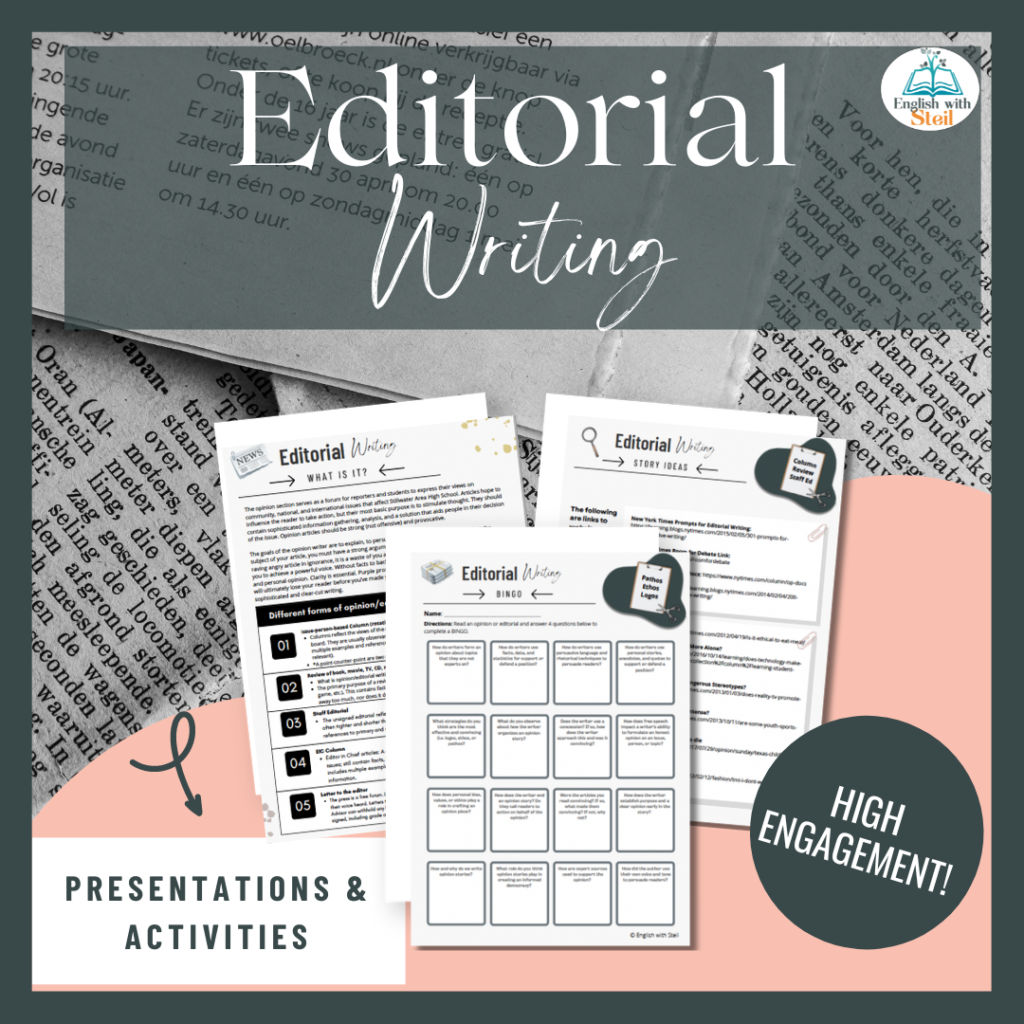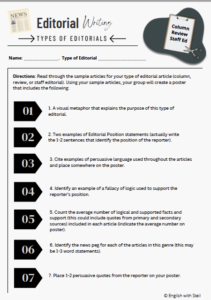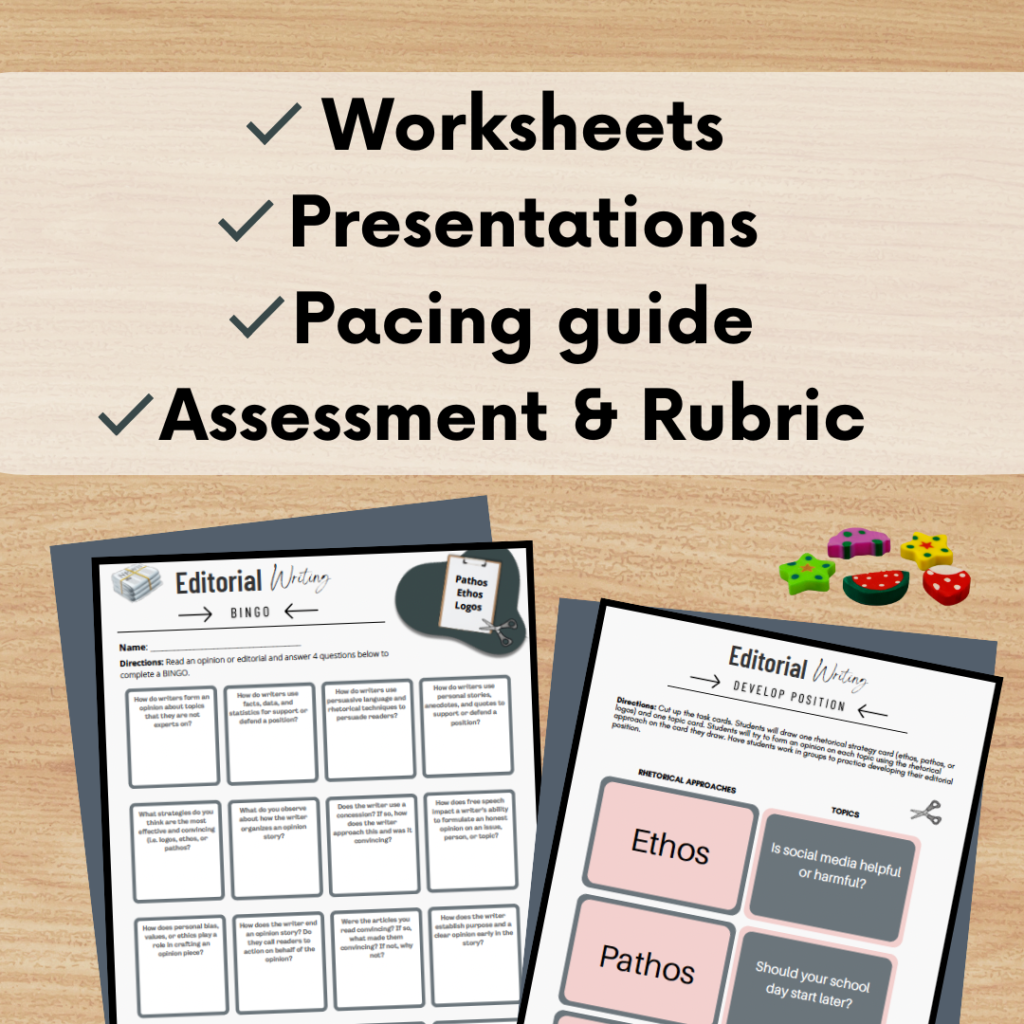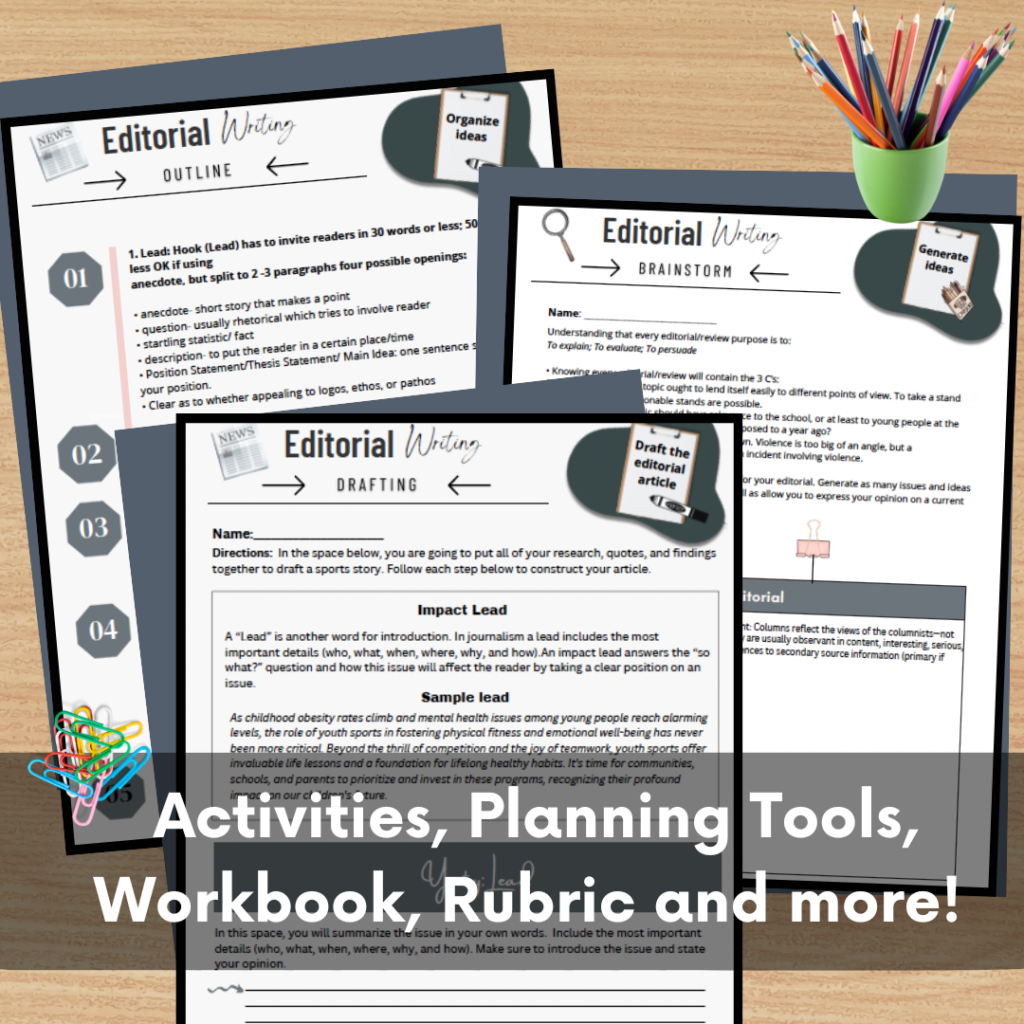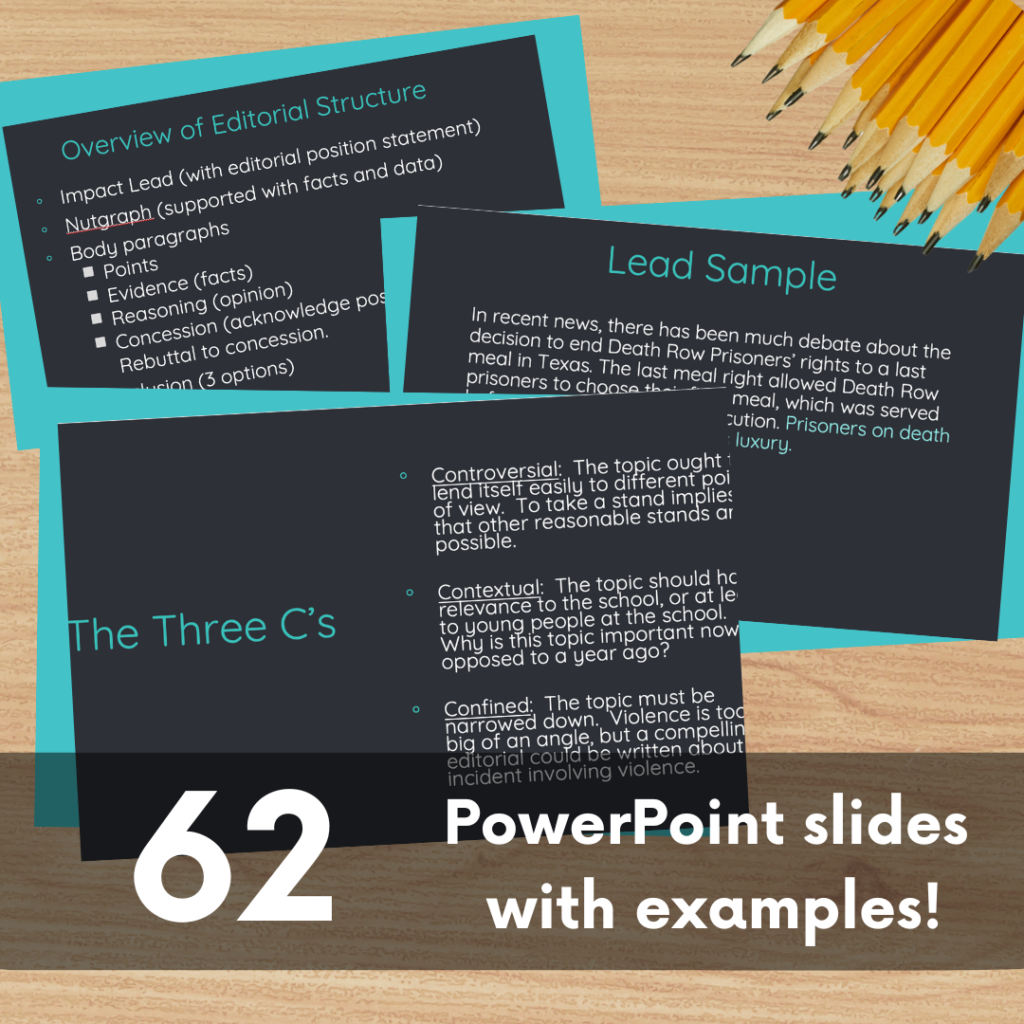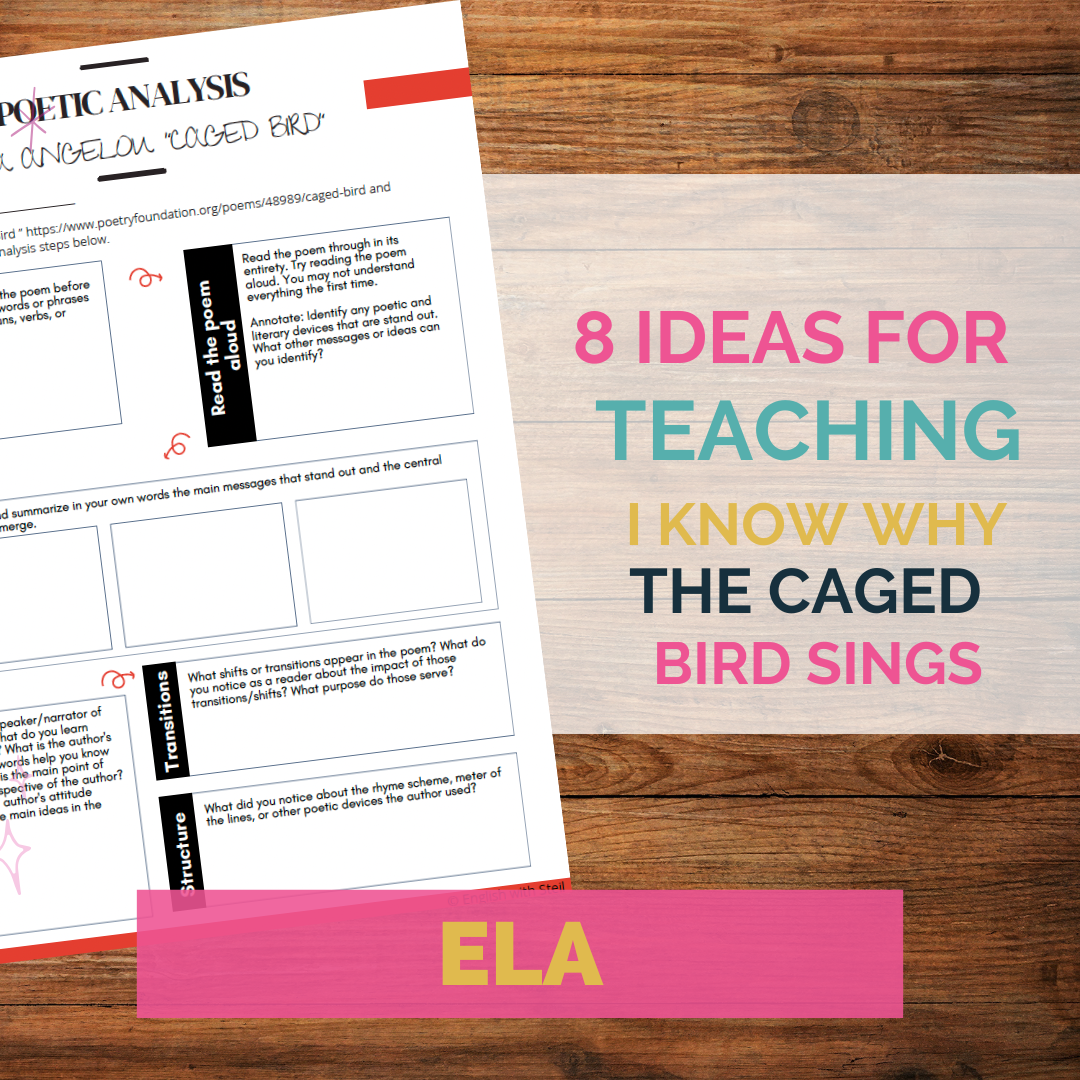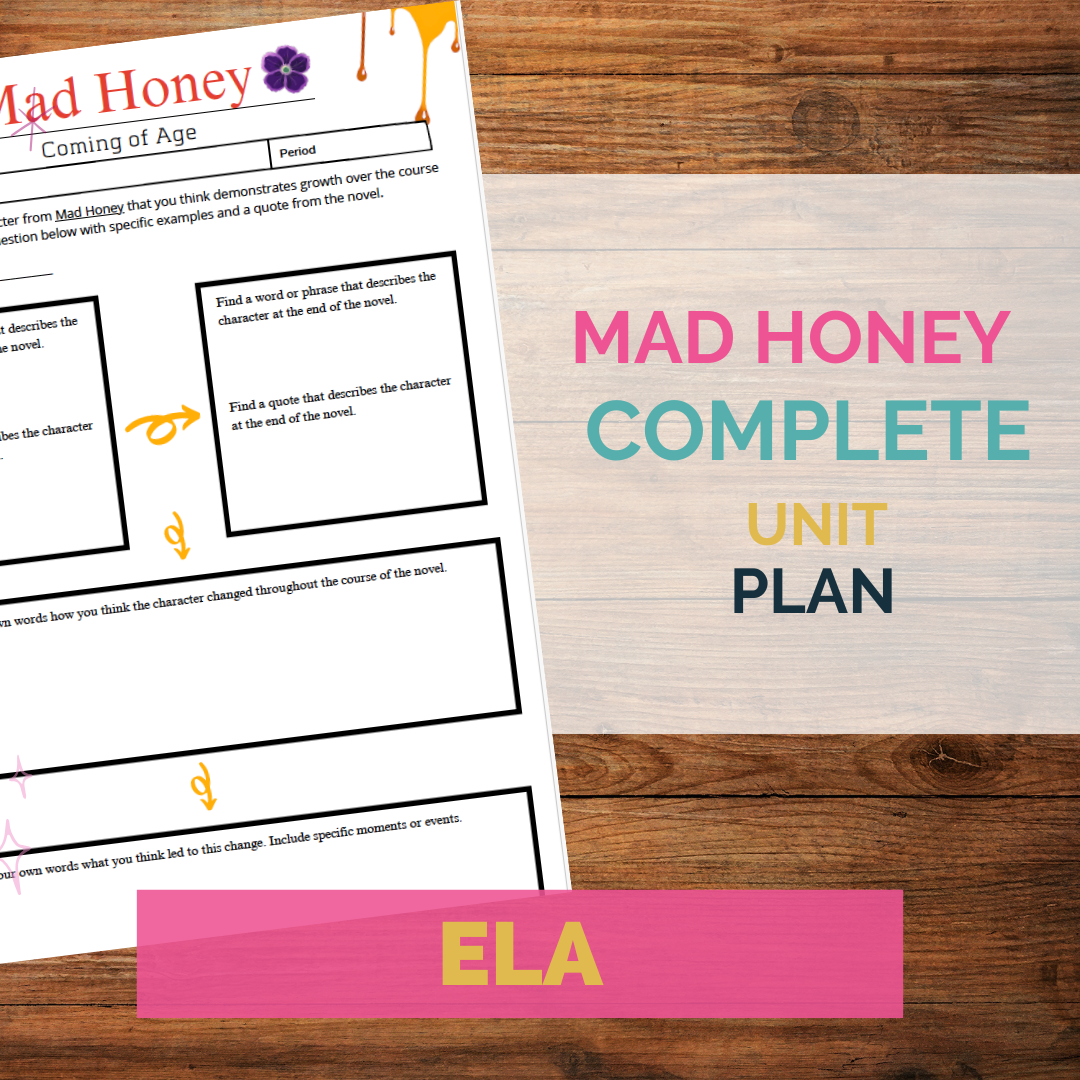One of the most rewarding units I do with my students is teaching them how to use their voice by writing strong editorial articles. We all live in a world where businesses live and die by ratings, feedback, and comments. Our students are used posting their opinion and feedback on everything from Amazon orders to Tik Tok! If you work with teens, you know they have opinions about, well everything! Am I right? However, being able to craft their opinion in a way that encourages readers to actually take them seriously involves some instruction and finesse. Keep reading to learn how I teach my students to write an editorial.
Understanding the difference between news and editorial writing
I start my editorial unit by asking students the following questions:
- The difference between news writing and editorial writing?
- What do you think is the role of the editorial in a high school newspaper?
- What is the purpose of entertainment reviews?
As I talk through these questions with students, it’s important for students to understand the purpose and function of an editorial and how it is different than a traditional news story. Editorials are one of the most widely read and re-shared sections of a newspaper (just behind the sports section). It’s important for students understand that an editorial’s main purpose is to explain, evaluate, or persuade readers about a current issue that they are passionate about.
The way I explain this to students is by breaking it down even further. A strong editorial can achieve any of the following:
Providing praise to someone or something
Endorsing someone or something
Defending a position on their topic
Investigate, advocate or appeal to someone or something
Warn readers or make a prediction
Selecting a topic for an editorial
The 3 cs: Controversial, Contextual & Confined
Developing the Editorial Position Statement
Once students have narrowed down their topics, it’s time to help them craft a position on the issue using academic voice. There are differing perspectives in the journalism world about their first person should be included in an editorial. My personal opinion is sometimes the use of first person can be absolutely appropriate. For example, if a student has personally been impacted or participated in the topic, then yes the use of first person makes sense. In fact, it gives the editorial a sense of credibility.
However, if your students are writing about subjects that they are not experts on, then I recommend students stick with an academic third person voice so their editorial doesn’t come across as preachy or uninformed.
Here are 4 simple guidelines I give students when crafting their position statements.
- Position statements are statements that contain a clear opinion.
- Position statements are not questions.
- Positions statements avoid use of 1st and 2nd person (unless they are directly involved)
- Position statements are focused and specific.
Crafting the editorial article
Once students have a topic and a sense of direction with their position statement, we learn rhetorical strategies of ethos, pathos, and logos. Initially, this is harder for students to incorporate effectively in their writing. But, over time they learn to more strategically use these strategies to craft their stories to they have a stronger impact.
- Impact lead with editorial position statement)
- Nutgraph (supported with facts and data)
- Body paragraphs
- Points
- Evidence (facts)
- Reasoning (opinion)
- Concession (acknowledge position of opposition). Rebuttal to concession
- Conclusion
Check out the following opinion & editorial resources from my fellow teacher colleagues:
Writing Editorials by Stacy Lloyd
Editorial Writing for ELA Classrooms by OF COURSE I Can
Finally, I recommend you check out National Scholastic Press Association’s Best of High School Press. There are some amazing examples high school editorials that will serve as mentor texts for students.
